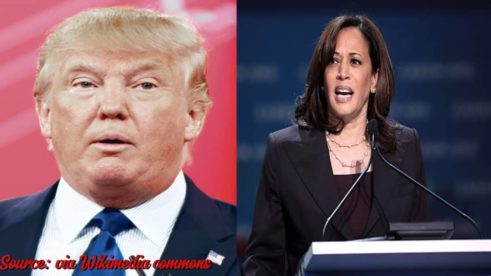In the U.S. presidential election between Trump and Harris, securing 270 electoral votes is the key to winning the White House. With a total of 538 electoral college votes available across the nation, each state offers a set number of votes based on population, making some states pivotal in close races. In most states, the candidate who wins the popular vote takes all the electoral votes, with the exceptions being Maine and Nebraska, which award votes by congressional district.
Historically, U.S. elections often come down to a handful of swing states. Current projections indicate that Kamala Harris, the Democratic candidate, starts with a base of 226 electoral votes, while her Republican opponent, Donald Trump, is expected to secure 219 votes from traditionally Republican states. This leaves a crucial 93 votes in swing states, making them essential for both candidates as they strategize paths to victory.
The Rust Belt Swing: Pennsylvania, Michigan, and Wisconsin
The Rust Belt states of Pennsylvania, Michigan, and Wisconsin are considered pivotal swing states, carrying significant electoral weight. These states have historically leaned Democratic, yet they flipped to Trump in 2016 before swinging back to the Democrats in 2020. Their voting patterns suggest a strong bloc that tends to favor one party collectively, making it challenging to split the vote.
For Harris, winning the Rust Belt could mean clinching the election, as these states’ combined votes would bring her close to or over the 270-mark. If Trump were to reclaim these states, however, he would still need additional wins in other swing states. Both campaigns are tailoring their strategies to appeal to these states’ diverse demographics—Harris aiming to energize urban voters, especially minorities, while Trump looks to bolster rural support.
Pennsylvania: The Keystone of Victory
Pennsylvania, with its 19 electoral votes, stands out as the most coveted prize among swing states. The candidate who secures Pennsylvania is widely believed to have a strong chance of winning the presidency due to the state’s reflective demographics and political diversity. Pennsylvania has a mix of large Democratic cities, Republican-leaning rural areas, and suburban communities that often determine the state’s final direction.
Harris’ campaign sees Pennsylvania as a linchpin, focusing heavily on mobilizing urban voters and suburban women, whose support could be decisive. Trump, on the other hand, relies on robust rural turnouts and has been actively engaging younger men in these areas. The importance of Pennsylvania has made it a focal point for both campaigns, which have poured significant resources into the state, mirroring the strategic importance it holds in the broader electoral map.
Sun Belt States: The Southern Battleground
The Sun Belt, encompassing Arizona, Georgia, Nevada, and North Carolina, offers 49 electoral votes across states that have become increasingly competitive. Unlike the Rust Belt, the Sun Belt holds a mix of political identities, with the Democratic Party gaining traction due to demographic shifts, especially among Black and Latino voters.
For Harris, winning all four Sun Belt states would virtually guarantee her victory, yet history suggests this is an ambitious goal for Democrats. Republicans have traditionally held sway here, though recent gains among Latino voters have bolstered Trump’s standing. However, controversial comments from his recent rally have sparked concern among some Latino voters, presenting a challenge to his campaign in Nevada and Arizona. The Sun Belt remains a diverse and dynamic arena where demographic shifts may shape the outcome.
North Carolina: Trump’s Essential State
North Carolina has emerged as a significant battleground, and its 16 electoral votes are critical for Trump’s path to victory. Although it leaned Republican in the last two elections, Harris’s campaign is optimistic, aiming to replicate the Obama-era turnout among Black voters, combined with support from an influx of college-educated residents who may be disenchanted with Trump’s rhetoric.
Losing North Carolina would complicate Trump’s strategy, forcing him to win a combination of Rust Belt and other swing states. Recognizing this, Trump’s campaign has prioritized outreach in rural and suburban areas, seeking to consolidate support among voters turned off by Democratic policies. Harris’s outreach to suburban women and Black voters will be essential if she hopes to turn North Carolina blue for only the second time since 1980.
Battling for the Persuadable 10%
Both campaigns are zeroing in on persuadable voters, estimated to represent roughly 10% of the electorate in swing states. Harris’s team is focusing on swaying college-educated suburban women, especially those in Republican households who may have reservations about Trump. Trump’s strategy is rooted in energizing rural voters and young men, particularly in regions where support for him remains high.
In states like Georgia, Nevada, and North Carolina, where margins are often razor-thin, every percentage point counts. Trump’s campaign aims to retain support in areas he narrowly won, while Harris looks to replicate Biden’s success among minority groups and attract disillusioned moderate Republicans. The push for these voters reflects each campaign’s understanding of just how crucial slight shifts in swing state voting patterns could be.
Polling and Predictions: A Close but Unpredictable Race
Polls suggest a tight race, with the gap between Harris and Trump averaging just over one percentage point across swing states. Historically, polling errors have ranged around four points, indicating the final results could easily differ from current projections. In recent elections, these polling inaccuracies have consistently underrepresented Trump’s support, making any lead for Harris tenuous.
There’s even a possibility of an Electoral College tie, which would lead to a congressional vote—a scenario that could ultimately favor Trump due to the Republican advantage in state delegations. This election is shaping up to be one of the closest in recent history, with unpredictable outcomes hinging on turnout patterns, last-minute voter decisions, and shifts in swing state dynamics. The electoral landscape is poised for a fierce showdown as both candidates battle for every vote that could tip the balance. Culled :BBC News














